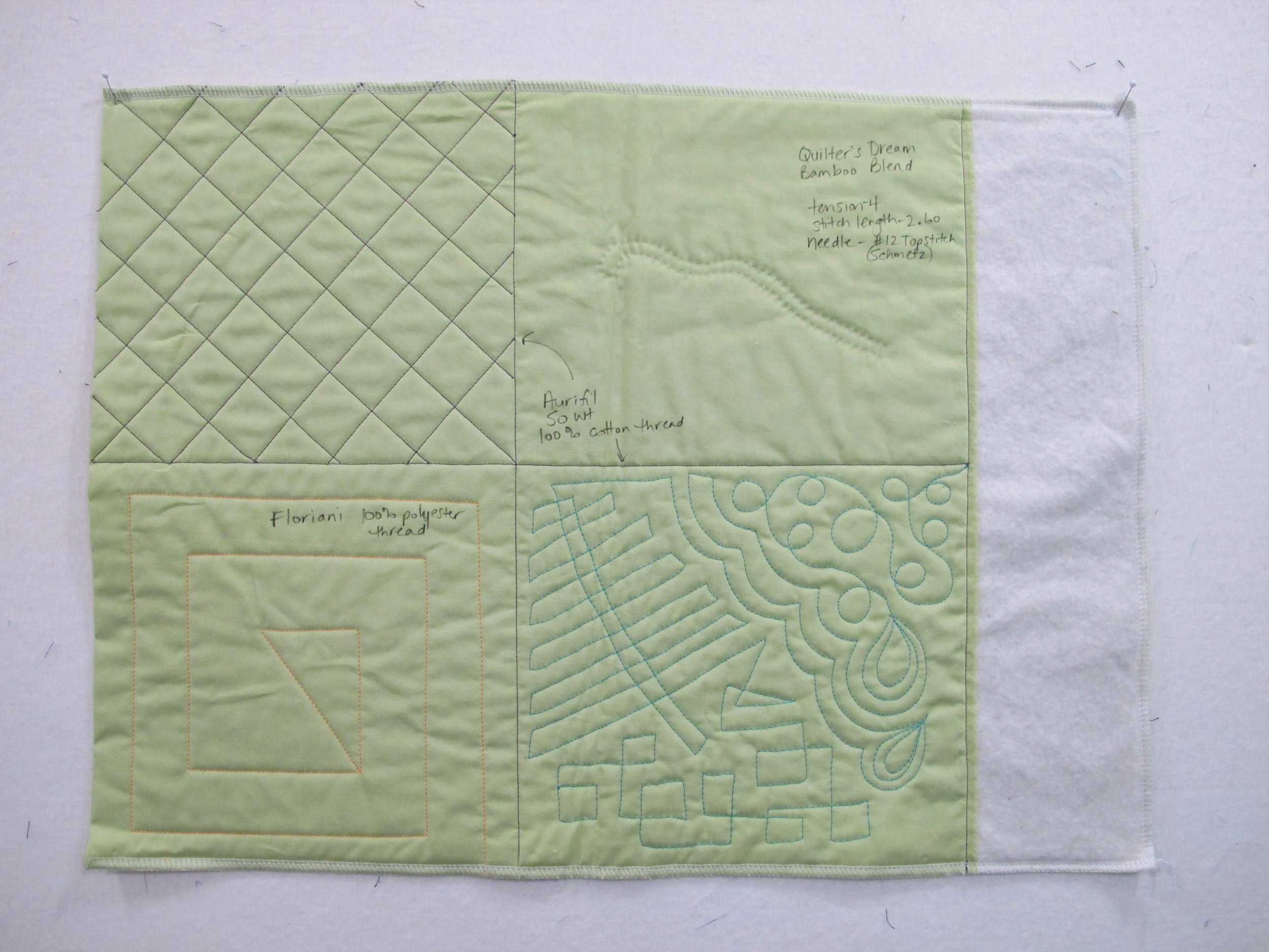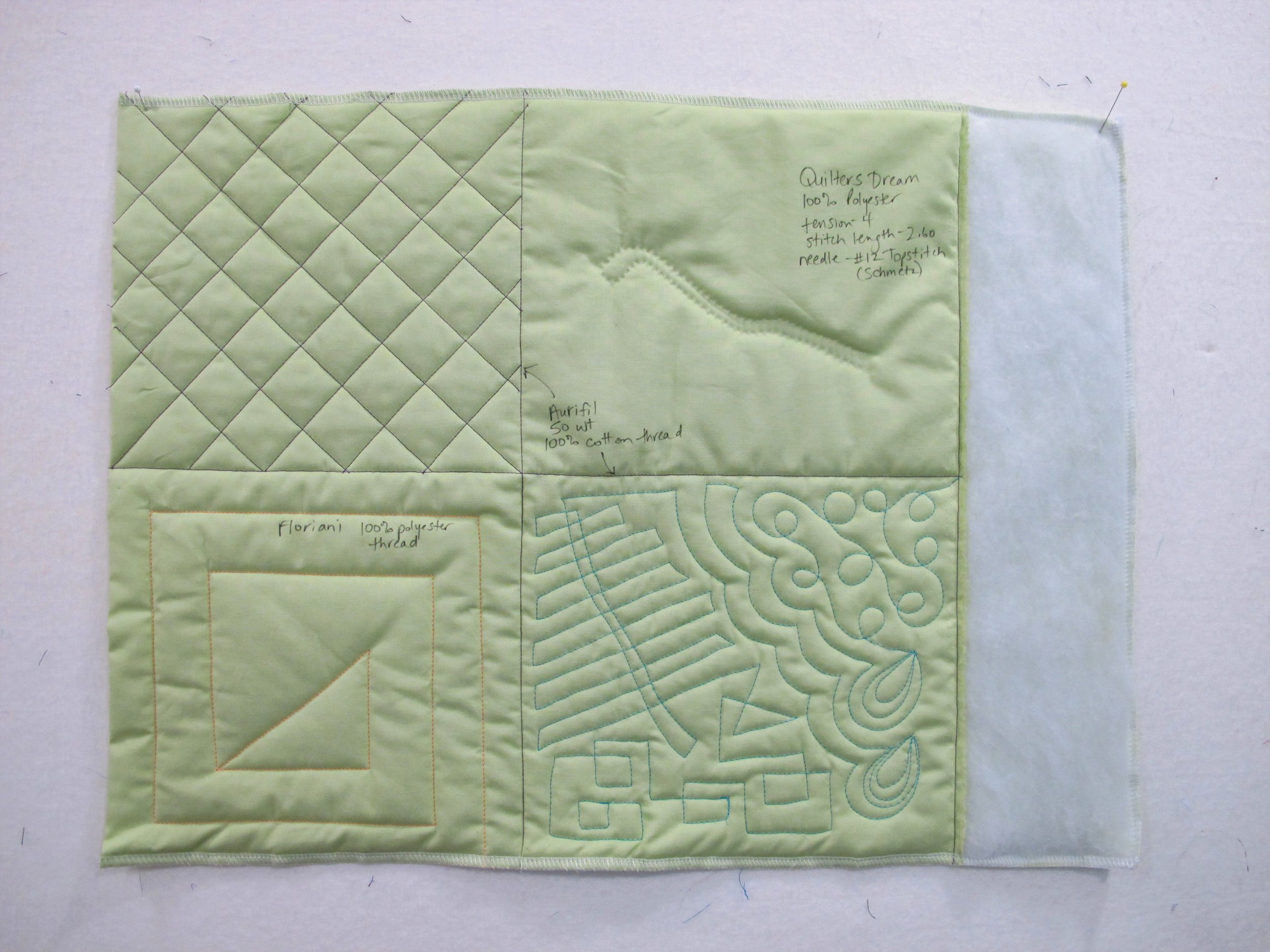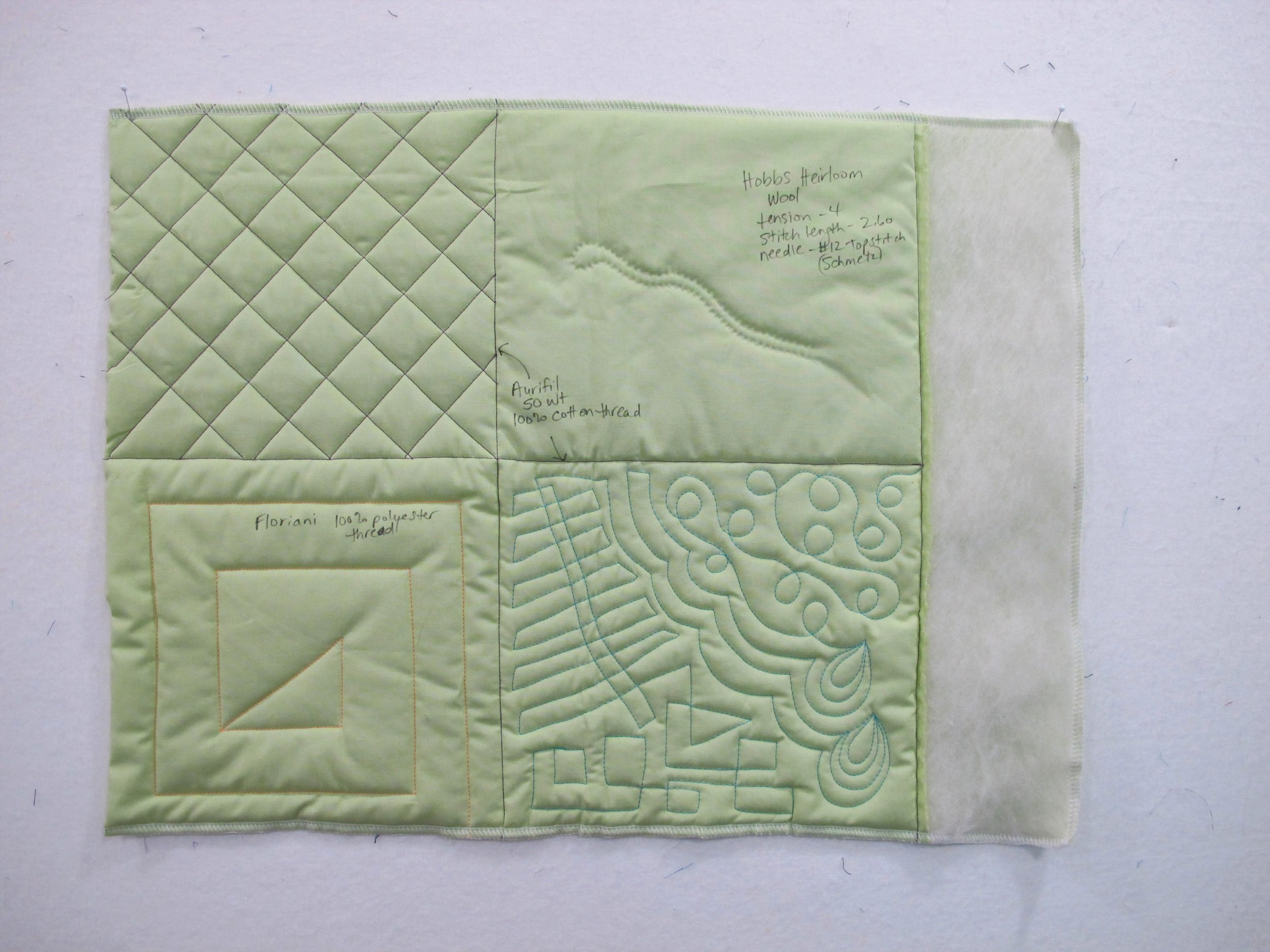All About Batting
Recently I took on the job of Program Coordinator for my guild the Twisted Stitchers. I had big shoes to fill as the past coordinators did an incredible job even in the midst of Covid when everything had to be done virtually through Zoom meetings. The tough part is coming up with topics that haven’t been spoken about before.
Well, I think I found one. Since I’ve been with the guild since 2005, I tried wracking my brain for something that may have been done in the early days that can be expanded on…that’s when I remembered that nothing, in detail, has really ever been done about one of the most important aspects of our quilts…BATTING!
Tracey from Whirls & Swirls Quilting was kind enough to give me some pieces of batting that she sells in her shop so I could make up some sizeable samples. Each sample would incorporate the exact same threads, use the exact same needle, and include straight line grid quilting, free-motion quilting and hand quilting.
Before I get into all of that I want to talk about how batting has changed over the years. A hundred years ago there were only 2 choices, cotton or wool. Cotton and wool both have impurities that have to be combed out of the fibres and then the fibres need to be carded before they are used for quilting. This is done using 2 wooden paddles that have short, straight needles embedded in the paddles (think of a large dog-grooming brush). Fibres are placed on one paddle and then combed and carded with the other until impurities have been removed and the small section is either ready to be laid down on the fabric for use as batting or ready for spinning into yarn or thread. This is definitely the “Reader’s Digest” version so try a search on-line if you need more information.
Many old quilts use wool or cotton batting or flannel sheets or old wool blankets for filler…remember that quilting started because people needed bed coverings to keep them warm and would use up even the smallest pieces of fabric leftover from sewing garments. You will also notice with antique quilts that quilting lines were often only 1/4” apart…that was so the fibres of the batting would remain in place, otherwise they could migrate to other areas.
In the 20th century polyester batting came into existence and with modern technology came battings that didn’t require such close stitches because there was a bonding agent added to stop fibres from migrating. Now we have so much to choose from that the task can seem daunting. Hopefully, I can offer some answers once you see the different samples and my findings with each one.
The 5 samples use the following types of batting:
- Hobbs 100% Cotton
- Hobbs Heirloom 80% Cotton/20% Polyester Blend
- Quilter's Dream Bamboo Blend
- Quilter's Dream 100% Polyester
- Hobbs Heirloom Wool
The following thread was used on all 5 samples:
- Aurifil 50 wt. 100% cotton- grid quilting and free-motion quilting (colours used- 2810, 2545)
- Floriani 100% Polyester embroidery thread- straight line quilting (colour used- PF5)
- Gutermann hand quilting thread (colour 5709 with a size 9 needle)
Machine settings for straight stitching on all samples:
- tension 4
- stitch length 2.60
- used Schmetz Topstitch needle size 80/12
***Sharon’s confession: I haven’t hand quilted in almost 20 years, so maybe that’s why I found the cotton and poly/cotton blend more difficult to stitch…and that’s also why there’s minimal hand stitching! For those of you who hand-quilt on a regular basis you’ll likely have no problems. I also had an almost 20 year old spool of thread and only one hand-quilting needle to be found!
***All battings (with the exception of 100% polyester) will shrink between 3-5%
gives a flat appearance with little to no loft and I found it a little stiff so it doesn't drape particularly well until it’s been washed a couple of times
machine stitches are even and tension is good
will shrink 3-5% so if fabric is not pre-washed and if you're looking for the finished product to have a traditional puckered look and vintage character then this batting does the trick
along with the cotton/poly blend this batting is the most difficult to hand quilt- needling is tough because natural impurities from the cotton get in the way
this type of batting tends to hold creases so be sure to refold your quilts often so the folds don't have a “memory”
this batting seems to be the most widely available and because of its ease of use is very popular
gives a flat appearance with very little loft
machine stitches are even and tension is good
there is some shrinkage, but the polyester stops it from getting too puckered
along with the 100% cotton batting this batting is the most difficult to hand quilt because of the cotton content
this type of batting can also hold creases so, just as with the 100% cotton, be sure to refold your quilts often so the folds don't have a “memory”
Quilter's Dream Bamboo Blend (bamboo, silk, Tencel (eucalyptus wood pulp), cotton):
still a flat appearance with little loft, but drapes beautifully because it is so wonderfully soft
machine stitches are even and tension is good
hand quilting is easier to accomplish than the above battings
minimal shrinkage
can be stitched very closely or as far apart as 8”
a couple of ladies at guild are not particularly fond of this batting because they claim it beards too much (more on that later)
much loftier so the quilting is puffier and stands out more
machine stitches are even and tension is good, but machine stitching is a little slower because of the loft
hand quilting is not difficult at all and the batting needles easily
no shrinkage whatsoever
can be stitched very closely or as far apart as 12”
does not hold creases
can be machine washed and dried
is very warm (so if you suffer from hot flashes this isn’t the batting for you!)
much loftier so the quilting is puffier and stands out more
machine stitches are even and tension is good, but machine stitching is a little slower because of the loft
absolutely the easiest to hand quilt
very lightweight, but warm
does not hold creases
once the quilt is completed it can be machine washed on the gentle cycle but NOT machine dried (it will shrink too much) so air drying is recommended
What is bearding?
Bearding happens when the batting fibres migrate through the fabric or seams. This can be caused by a couple of different things. Low quality or loosely woven fabrics can allow the batting fibres to poke through. Sometimes when a machine needle has a burr on it that is not noticeable to the naked eye, it can pull the fibres up to the top as the needle passes through the fabric. Occasionally, if a needle is too large, it can create larger holes allowing fibres to migrate more easily.
Sometimes the white/cream batting fibres show through more noticeably on a dark quilt...black battings are available for cases like this.
Double batting:
One thing that has become popular recently for quilts entered into competition is double batting. The bottom layer of batting is usually 80/20 blend to offer stability and the top layer of batting is usually wool so that the stitches really stand out and highlight the designs.
I found this experiment to be very enlightening. I predominantly use the Hobbs Heirloom 80/20, because it has proven time and again to be great quality and washes beautifully, but I have to say that I’m very much intrigued by the Hobbs Heirloom Wool and just might use it in my next special project. Now you may want to try your own experiment with the different battings on the market using the fabrics and threads that you use the most. You might just find a new favourite!







